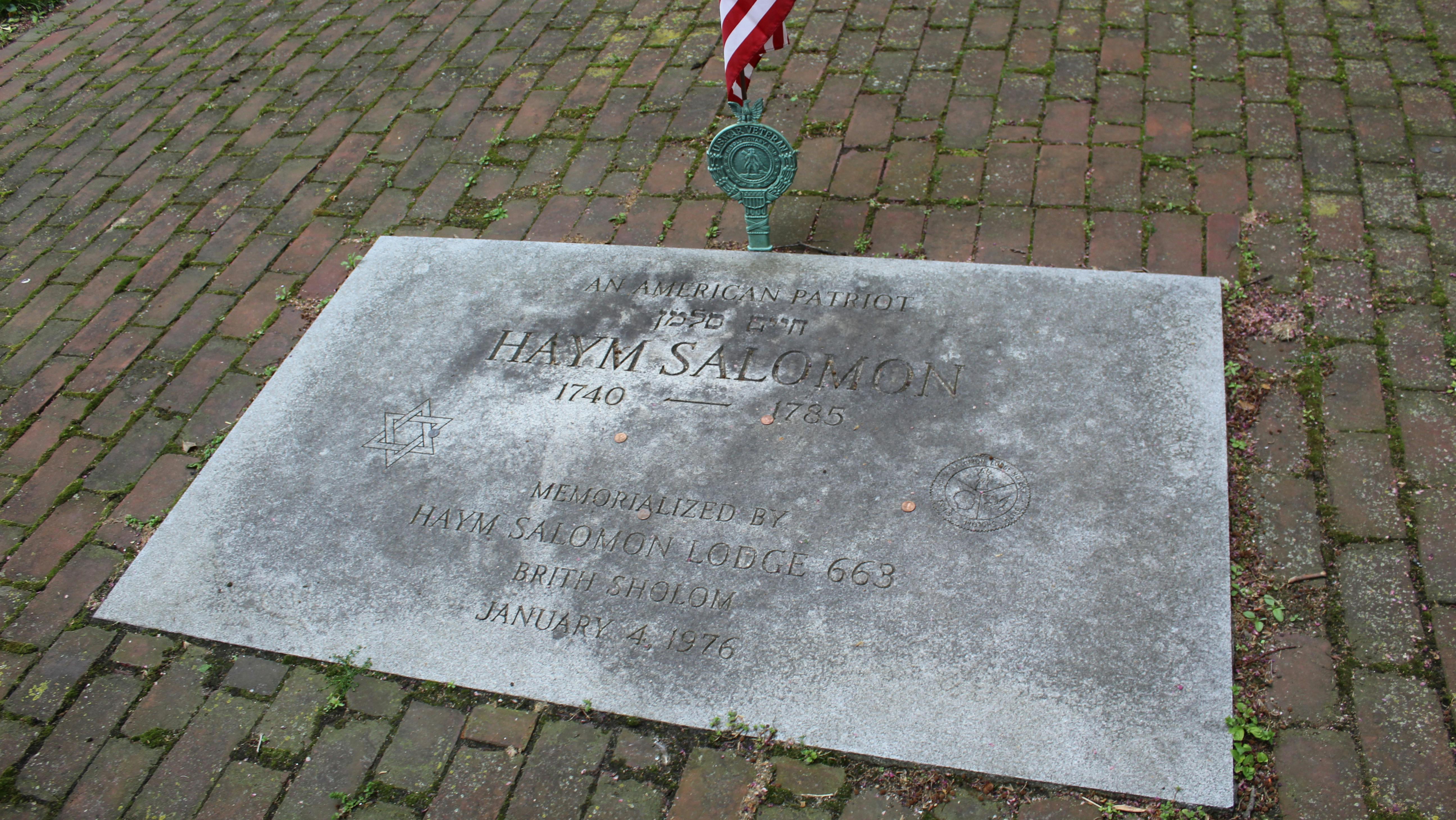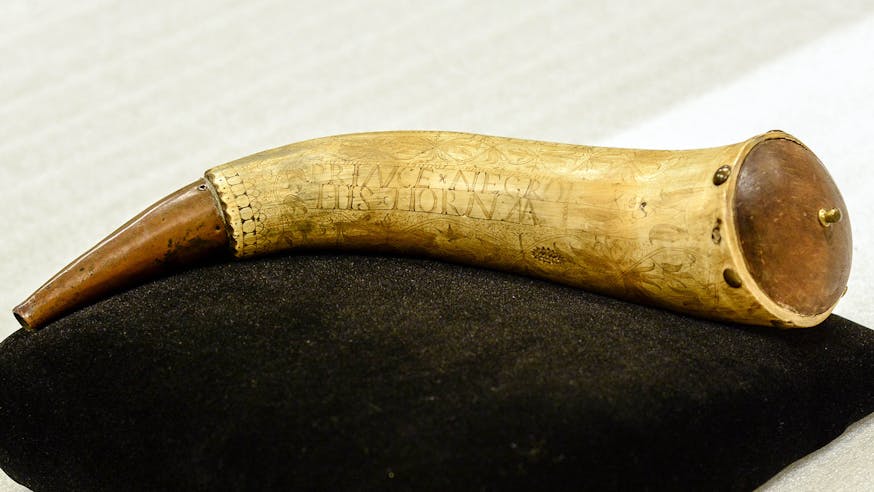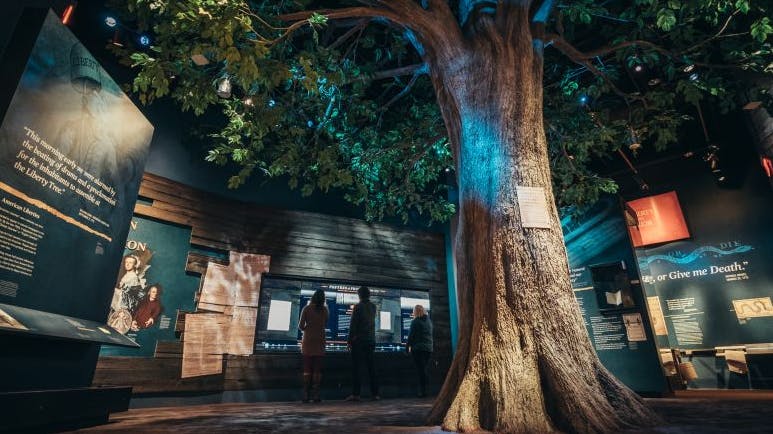Revolution Around the World
Poland and the American Revolution
June 2021
The Revolution Around the World series explores the impact of the American Revolution on the globe and the influence of people from other countries on the Revolutionary era.
What was happening around the world in 1776? When and why did different countries get involved in the Revolutionary War? What was the impact of the broader American Revolution on those countries?
Take a closer look as we examine the role Poland played in the American Revolution.
What was happening in Poland in 1776?
In 1776, Poland, or the Polish-Lithuanian Commonwealth as it was then known, was reeling from its own political crisis. Just a few years prior, Polish lands had been ceded to Russia, Prussia, and Austria, which greatly reducing the power and influence of the Polish government and its people.
This First Partition, this process of land division, was ratified by the Sejm. The Sejm was the parliamentary body that governed the Commonwealth and elected its monarch. It was made up of nobles (called szlachta) who represented their different provinces and individual sejmiks or provincial and local governments. The Sejm was required to be held every two years or as necessary under extraordinary circumstances, so it was a legislature that met irregularly. One of the Sejm’s primary duties was to elect the monarch of the Commonwealth. The szlachta would meet outside Warsaw in a field in Wola, where the electors would cast their ballots for different candidates. Technically, any Catholic nobleman could be nominated for candidacy, but usually it was a powerful magnate or an influential member of a foreign dynasty.
King Stanislaw II had been elected to the throne in 1764 with the support and influence of Catherine the Great of Russia. There were attempts by the members of the Sejm to resist this First Partition, but all failed. Over the next 20 years, with continued political pressure, foreign dominance, and war, Poland would cease to exist as an independent nation from 1795 until 1918.

When did Poland become involved in the American Revolution?
The Polish-Lithuanian Commonwealth was not directly involved in the American Revolution, but there were individual Poles who traveled to America of their own volition in order to participate. The Commonwealth’s political and economic conditions were worsening as the 18th century progressed. It would have been quite difficult for Poland to lend formal aid or arms outside its borders when its power was becoming so weak inside its borders. While the Commonwealth did not participate, the individuals who did made contributions that would affect the entire outcome of the American Revolution.
Which side did Poland choose, and why?
The individual Poles who did travel to the United States appear to have predominantly sided with the Revolutionary efforts. This could be attributed Poland’s own political strife in dealing with what many Poles perceived to be oppressive empires infringing upon their country’s sovereignty and individual liberties. The revolutionary ideas of equality, self-determination, and new systems of government also appealed to the principles of the Enlightenment held by some people in Poland at the time, similar to what was also happening in France. Like many aspiring lesser nobles and out-of-work nobility from places like France, some Poles saw opportunity for advancement and glory in serving the Revolutionary cause.
Who were the key Polish players in this story?
Two of the most recognized Polish names from the Revolutionary War are Thaddeus Kościuszko and Casimir Pulaski. Both traveled to the United States and volunteered their military skills to the Revolutionary cause. Kościuszko was a brilliant engineer and tactician whose recommendations and strategies were instrumental in victories both in the Northern and Southern theatres of the war. Pulaski is called the “Father of the American Cavalry” and used his knowledge and prowess of mounted troops to support the Revolutionary war effort in the field.
Another important Polish contributor to the American Revolution was Haym Salomon. A Polish-born Jewish immigrant, Salomon was twice arrested by the British for spying. The second time he was sentenced to death but was able to escape to Philadelphia before the sentence was carried out. Perhaps Salomon’s most impactful contributions were in the realm of finance. Through his efforts in fundraising and personal contributions, he raised over $650,000 for the Continental Army, equal to approximately $9.4 billion today.

What was the impact of Poland's involvement?
The contributions of Polish individuals were significant. Kościuszko’s tactical prowess saved Revolutionary forces from complete destruction during the retreats from Fort Ticonderoga in the North (July 1777) and the Race to the Dan in the South (February 1781). He engineered near-impregnable fortifications at West Point and the Battle of Saratoga, and also helped survey and select fields of battle, such as Guilford Courthouse. Also in 1781, facing an empty American war chest, Robert Morris relied on the skills of Haym Salomon to secure funds for the Yorktown Campaign. Casimir Pulaski’s abilities as a cavalryman and commander is credited with helping to save George Washington from capture at the Battle of the Brandywine in 1777, after which Pulaski’s undeterred insistence led to the creation and deployment of more numerous and well-trained cavalry for the Revolutionary army. Thanks to very recent scientific study, we also have greater insight into the lives of intersex individuals of the American Revolution with the recent discovery and analysis of the remains of Pulaski, who identified as male throughout his life and also appears to have possessed female biological characteristics.
On a more global scale, the influence of the American Revolution spread to the country of Poland itself, not only in the return of Kościuszko to his homeland to lead a war against Russia for Polish independence but also in the production of the country’s new constitution in 1791. This constitution was influenced by the relatively new one ratified by the United States just two years earlier. Even the timing of the constitutions appear linked, considering the process for the creation of the US Constitution began in 1787, the same year that the Four Year Sejm, which created the Polish Constitution, began its process. Unfortunately for Poland, their 18th century revolution had a different outcome compared to the ones in the United States and France, with the Third Partition occurring in 1795 and the resulting disappearance of the country for 123 years.
Dive Even Deeper
- More on Polish contributions to the American Revolution: Take a virtual "walking" tour of Thaddeus Kościuszko's time in Revolutionary-era Philadelphia, including to the house at which he stayed on 3rd and Pine Street and the statue dedicated to him on the Benjamin Franklin Parkway. Plus, learn more about memorialization in the Museum's galleries through the story of Casimir Pulaski. On your next visit to the Museum, or in the Virtual Museum Tour, learn more about Pulaski and Kościuszko's contributions to various battles throughout the Revolutionary War.
- Related Read the Revolution Recommendations: Read an excerpt from Richard Wright and David Cowen's Financial Founding Fathers about how men like Haym Salomon laid the economic groundwork for the United States. Plus, learn how Thaddeus Kościuszko helped General Nathanael Greene navigate terrain in the south in an excerpt from John Ferling's Winning Independence.
- Haym Salomon in Historic Philadelphia: On your next trip to historic Philadelphia, journey to sites related to Haym Salomon, including his historical marker near 5th and Market Street and the Mikveh Israel Cemetery on Spruce Street where he's buried. Salomon was the largest contributor to Mikveh Israel's first building, dedicated in 1782. At the Museum, you can view a set of silver Torah finials on loan from Mikveh Israel.
Learn More

Discovering History: Memorialization at the Museum

Thaddeus Kościuszko Virtual Walking Tour

